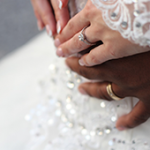 In South Africa, there are various forms of marriage, which includes Civil Marriage, Customary Marriage and Civil Union. For a long time, customary unions (marriages) did not have the same full legal status as civil marriages (e.g. magistrate’s court marriages) had in South African law. This was unfair discrimination and also made women in customary marriages vulnerable.
In South Africa, there are various forms of marriage, which includes Civil Marriage, Customary Marriage and Civil Union. For a long time, customary unions (marriages) did not have the same full legal status as civil marriages (e.g. magistrate’s court marriages) had in South African law. This was unfair discrimination and also made women in customary marriages vulnerable.
The Recognition of Customary Marriages Act
The new Recognition of Customary Marriages Act became law on 15 November 2000, together with Regulations under the Act.
The new Act:
- Sets down the rules for a proper customary marriage.
- Gives full legal recognition to a customary marriage.
- Makes women and men equal partners in a customary marriage.
- Gives community of property to partners in a customary marriage who married after 15 November 2000 – unless they agree not to share property between husband and wife.
- Gives legal recognition to polygyny (when a man can have more than one wife).
- Protects a woman’s right to end a polygynous marriage, and her right to the joint property of her marriage.
- Sets down legal rules for ending a customary marriage, including divorce.
- Allows a woman to claim maintenance when the marriage ends – although the courts will take into account the lobola/bohali contribution when deciding on maintenance payments.
Requirements for a customary marriage
There are only three basic statutory requirements for the validity of a customary marriage in terms of The Recognition of Customary Marriages Act 120 of 1998. Section 3 of the Act states that:
“For a customary marriage entered into after the commencement of the Act to be valid:
- the prospective spouses:
- must both be above the age of 18 years
- must both consent to be married to each other under customary law; and
- the marriage must be negotiated and entered into or celebrated in accordance with customary law.”
Reference:
- The Recognition of Customary Marriages Act, 120 of 1998
This article is a general information sheet and should not be used or relied on as legal or other professional advice. No liability can be accepted for any errors or omissions nor for any loss or damage arising from reliance upon any information herein. Always contact your legal adviser for specific and detailed advice. Errors and omissions excepted (E&OE)
